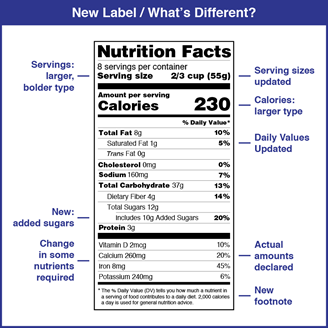Healthy Eating and Traveling During the Holidays
Tuesday, December 13, 2022
Watch the Video
Join us for the Ask the Experts event, Healthy Eating and Traveling During the Holidays on December 13. The holidays can be a wonderful time with family and friends, but also a difficult time to manage your diabetes. Join us and ask our expert questions to help you balance diabetes management, travel, and the abundance of high carbohydrate foods and alcohol that can show up at holiday gatherings.
Diabetes Stress: Does it Differ from Clinical Depression?
Tuesday, November 8, 2022
Watch the Video
People with diabetes are likely to have diabetes distress and are more likely to be diagnosed with depression than a person without diabetes. Ask your questions and get tips on how to cope with life’s added stress of having diabetes.
Spring into Action – The Link Between Diabetes Management and Exercise
Tuesday, April 12, 2022
Watch the Video
Our expert will provide you with information on how exercise can contribute to better blood glucose (blood sugar) management and improved overall health. This includes reducing your risk for heart disease and stroke. Learn about how to get started and stay motivated!
Does Kidney Disease Have to Happen?
Tuesday, March 8, 2022
Watch the Video
Ask your questions and learn how to protect your kidneys from damage when you have diabetes. We will explore preventative tips, how to maintain the kidney function you have, and optional treatments to discuss with your care team.
Preparing Healthy Meals for the Whole Family!
Download the PDF for a quick cheat sheet on preparing healthy meals for the whole family.
Some people are just easy to please and ready to eat whatever is set before them. Other people are so picky it seems like nothing pleases them, and especially if it is considered “healthy” or “good for you.” How can we plan, buy, and prepare for kids or those who don’t understand the importance of eating healthy?
A great place to start is to know where to find the healthy foods in the grocery store. Generally, buying food from the outer aisles of the grocery store is a good practice. That is where you find the fresh meat, fresh fruit, fresh vegetables and dairy products. Those items are usually on the healthy list. You can also find foods in the frozen food aisle – fresh frozen vegetables and fruit with no added salt or sugar. Many whole grain foods such as whole grain pasta, brown rice and whole grain bread are found in the middle aisles.
It is also a good idea to read the nutrition labels on the packaged foods to understand what’s in the food.
Try These Smart (and Healthy) Substitutes!
| Meat and Cheese Burrito | Choose lean meat. Add a small amount of black beans and cabbage – continue to increase the amount of vegetables over time |
| Beef Stew | Think about adding a small amount of another vegetable (or in lieu of beef) such as sweet potatoes or chard |
| Cereal | Choose a whole grain, low sugar cereal |
| Rice dish | Use brown rice or mix brown rice with the white rice, (eg. half and half) to start out |
| Peanut butter and jelly | Use whole grain bread or use one slice of whole grain and one slice of white to make it a variety sandwich |
| Oatmeal | Add sliced strawberries or blueberries – fresh or frozen- for sweetness instead of adding sugar |
| Side Dish | Consider experimenting with fresh vegetables and dips the family might enjoy |
If you have children, engage them in the grocery shopping. Have them choose a new vegetable or fruit to try. There are some really interesting looking ones out there that they may want to challenge you to try too! For example, try prickly pears or elephant fruit. Include the whole family in planning a few menu items for the week. Use a fresh fruit or vegetable with every meal as your mantra.
Another barrier to healthy eating is not having enough time in the day to cook.
Try These Tips to Save Time!
| Chicken Strips | Thaw frozen chicken strips and add to frozen vegetable stir fry. Pour the stir fry over brown rice for a quick and healthy meal. |
| Roasted Chicken | Remove the skin and pull the chicken off and place on each plate. Add a baked potato (8-9 minutes in the microwave) and consider a side salad. You can even grab the premixed lettuce and just add the dressing. |
| Egg omelets | Make the eggs and then add a vegetable of choice and some shredded cheese. Spinach, zucchini, or tomatoes work well. |
| Quesadillas | Use pre-shredded cheese, cabbage slaw and optional meat of your choice. Or try a taco bar with meat, cabbage or shredded lettuce, shredded cheese, cherry tomatoes and guacamole. |
Here are some recipes to help you with your meal planning. The American Diabetes Association’s food hub can give you more ideas. Give these tips a try and healthy eating can be a family affair.
Understanding the Nutrition Facts Label
Download the PDF for an easy cheat sheet to understand the nutrition facts label.
Healthy eating is an important part of managing your diabetes and keeping your heart healthy.
Learning how to read and use the Nutrition Facts label on foods can help you make healthier food choices.
If a dietitian is part of your health care team, the dietitian will often suggest counting carbohydrates (carbs) as part of your total diabetes plan. This is because the biggest rise in blood sugar is generally a result of the quantity and quality of the carbs that you eat at each meal and snack.
That is important—but so are other parts of food. For example, is the food high in saturated fat? Are there nutrients of value found in the food? Does the food have added sugars beyond those contained in the natural form of the product? These are all extremely important things to consider when making food choices, because saturated and trans fats and added sugars are linked to increased risk for heart disease.
So, let’s dive in! You can use this label to practice.

Serving Size
At the top of the label, you’ll find the serving size. Understanding the serving size will help you determine the right portion size and understand how many portions are in the package. This will also help you to make accurate calculations.
Calories
Next, you’ll find the calorie count. Pay attention to the calories per serving and how many calories you’re consuming with the portion size you are choosing.
Remember that the information shown in the label is based on a diet of 2,000 calories per day. Your calories needs will vary depending upon your age, gender, activity level, and whether you’re trying to lose, gain or maintain your weight.
Carbohydrates
Determining the carb count
Knowing the amount of carbs you’re getting per meal is important, as carbs have the biggest impact on your blood sugar. If your goal is to eat 30 grams of carbs per meal and you plan to eat 2/3 of a cup of a product, you might find that you’re getting 37 grams of carbs (four of which are grams of fiber) according to its Nutrition Facts label.
If you decide eat 1/3 of a cup of the same product, you would be getting 18.5 grams of carbs instead. Lowering your carb count by eating a smaller portion size leaves room to add something else to your meal, like an 8 oz glass of milk which has 12 grams of carbs.
If you are using portions for carb counts, one portion is 15 grams of carbs. If you eat 2/3 of a cup of this product, it would be a little more than two portions.
Counting carbs
For individuals on an insulin to carb ratio—you can use the Nutrition Facts label to help you add up the total grams of carbohydrates you are eating, then divide by the ratio.
For example, let’s take this label once again. If you are eating 2/3 of a cup of this product, it would be 37 grams of carbs. Let’s say you were also going to have an apple. No label! You can look up the nutrition information via Google or a food application and determine it has about 20 grams of carbs. Adding the two together equals 57. Now let’s say your insulin to carb ratio is 15. You would divide 57 by 15 to get 3.8 units (rounding to 4 units of insulin for that meal).
Nutrients
Another item you can find on the Nutrition Facts label is the amount of other nutrients.
Let’s say a product has 20% of the daily recommendation of 1,300 mg of calcium. This is based on a 2,000 calorie food plan, and if you consumer fewer calories per day, the percent of the daily value as listed on the label will not be true for you.
However, the label now includes nutrient measurements in milligrams. If you know you should be getting 1,300 mg of calcium a day and this product contains 260 mg/dL, it is advised for you to find other products that have calcium in them, like dairy, almonds, or tofu to bring you up to the recommended daily value.
Fats
Although fat can also contribute to changes in your blood sugar, they have less influence than carbs. However, it is important to reduce amount of saturated and trans fats as a part of a balanced diet.
Replacing foods that are high in saturated fat with healthier options can lower blood cholesterol levels and improve lipid profiles.
Sodium
Sodium is the amount of salt in food. Eating less sodium can reduce your risk of high blood pressure and bloating. It can also reduce your risk of heart attack, heart failure, stroke, kidney disease, osteoporosis, stomach cancer and even headaches.
Resources
If the product does not have a Nutrition Facts label, for example fresh fruit and vegetables, consider adding an app to your phone that allows you to look up carbs and other nutrients. There are several excellent apps out there, and if you have questions, ask your dietitian/health care team for some recommendations.
Once you’ve chosen healthy food products, you may need some inspiration. There are many healthy and delicious recipes to choose from that can help you manage your diabetes and your risk for heart disease, stroke, and chronic kidney disease.
https://www.fda.gov/food/food-labeling-nutrition/changes-nutrition-facts-label
Cooking for Everyone’s Preferences and Dietary Needs
Download the PDF for a quick reference on cooking for everyone’s preferences and dietary needs.
Many times, when we get together for family holidays, the menu is already fixed. We look forward to our favorites and these traditions span generations. The traditional days can remain the same with few exceptions to make the meal diabetes-friendly. But what about all those meals that can lead up to the holidays, or if family is vacationing with you or getting together on a Sunday afternoon? Grandpa wants biscuits and gravy, grandma wants a gelatin salad with fruit, and the kids—well they may just be waiting for dessert. Keep reading to learn how to please them all with some healthy choices.
Use the Diabetes Plate Method
The Diabetes Plate Method is an easy way to create healthy meals that help you manage your blood glucose (blood sugar). This method is based on a nine-inch plate, with half containing non-starchy vegetables, one quarter containing meat or other lean protein, and the other quarter should include a starch, preferably whole grains. Other dietary recommendations include less foods with solid fat (meat fat/dairy fat), moderate salt, and small portions for dessert. Is it possible to do that and make everyone happy?
Offer a Variety of Options
Asking your guests ahead of time what their favorite healthy food and snacks are may be helpful, but you can also offer an easy variety for them to pick and choose:
- Set up a salad bar on the counter. Include lettuce, cherry tomatoes, cucumber, broccoli, carrots, cottage cheese, hard boiled eggs, garbanzo beans, radishes, or other salad toppings—certainly there will be something each person would be willing to try!
- For the side dish, consider easy-to-make roasted baby baked potatoes, corn, or a blend of brown and white rice.
- If you are considering homemade rolls, and mix whole wheat and white dough—a bit of each for everyone’s taste.
- Grilled meat such as chicken, grilled fish, or a lean beef roast may be an easy crowd pleaser, leaving the gravy off the menu or opting for a lighter or more natural juice. The protein dish may feel a bit more of a challenge if you also have guests who are vegetarian or vegan.
- Have guest that crave dessert? Topping angel food cake with strawberries or blueberries is a great dessert! Another easy dessert may be a small scoop of ice cream topped with fresh fruit.
Snack Planning
If you have family or friends for an extended stay, carefully plan the grocery store shopping ahead of time:
- Fresh vegetable trays with dips are usually a hit for those that like to snack or can’t wait until dinner is served.
- There are lots of new zero-calorie flavored water products on the market. Or just slice up some lemons, oranges, or limes and add to a pitcher of water in the refrigerator for flavor infused water.
Being a role model for healthy eating can be hard, but by offering a variety of healthier options, you are giving your family and guests opportunities to make healthier choices.
It also helps to plan meals in advance. Check out these diabetes-friendly recipes from Know Diabetes by Heart™ for inspiration.
For more healthy ideas, check out diabetes.org/nutrition or recipes.heart.org .
Lifestyle Choices to Protect Your Heart
Tuesday, February 9, 2021
Watch the Video
We will discuss lifestyle choices to embrace and those to avoid to reduce your risk of heart disease. We’ll cover food and beverage choices, physical activity, smoking cessation and more.
Nutrition in the New Year
Tuesday, January 12, 2021
Watch the Video
We will discuss strategies for creating a healthy meal plan and suggest the best way to space out meals and snacks for optimal diabetes management.
Healthy Food Swaps for the Holiday Season
Tuesday, November 10, 2020
Watch the Video
The holiday season often means bringing family and friends together to share meals. Learn about healthy swaps and portion control and ask your questions of our nutrition expert.




